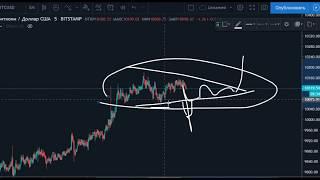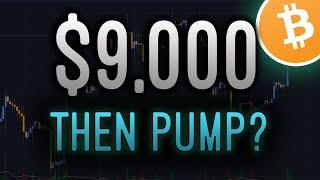The Dominance of the US Dollar: The USD INDEX - Chapter 3
The US Dollar Index (DXY) is a measure of the value of the US dollar relative to a basket of six major foreign currencies: the Euro, Japanese Yen, British Pound, Canadian Dollar, Swedish Krona, and Swiss Franc. Established in 1973, the DXY provides a comprehensive view of the dollar's strength on the global stage.
Several key factors influence the rise and fall of the USD Index:
1. Interest Rates: One of the primary drivers of the USD Index is the interest rate set by the Federal Reserve. Higher interest rates attract foreign investors seeking better returns on investments denominated in USD, thereby increasing demand for the dollar and pushing up the index. Conversely, lower interest rates can lead to a decline in the index.
2. Economic Indicators: Indicators such as GDP growth, employment rates, and manufacturing output reflect the health of the US economy. Strong economic performance typically boosts investor confidence, leading to a higher USD Index. Poor economic data can have the opposite effect, diminishing confidence in the dollar.
3. Inflation Rates: Inflation impacts the purchasing power of the dollar. Higher inflation erodes the value of the dollar, potentially leading to a lower USD Index. Conversely, lower inflation can support a stronger dollar.
4. Geopolitical Stability: The USD is often considered a safe-haven currency. During periods of geopolitical uncertainty or global economic instability, investors flock to the safety of the dollar, driving up the USD Index. Stability in other major economies can divert investments away from the dollar, lowering the index.
5. Trade Balances: The US trade balance affects the supply and demand dynamics of the dollar. A trade deficit, where imports exceed exports, increases the supply of dollars in the global market, potentially lowering the USD Index. A trade surplus can have the opposite effect, reducing the supply and strengthening the dollar.
6. Market Sentiment: Investor sentiment and speculative activities can also influence the USD Index. Positive sentiment towards the US economy or global risk aversion can lead to increased demand for the dollar, while negative sentiment can reduce demand.
7. Monetary Policy of Other Central Banks: Policies from other major central banks, like the European Central Bank or the Bank of Japan, can affect the USD Index. For example, if these banks implement quantitative easing or lower interest rates, their currencies may weaken relative to the dollar, boosting the USD Index.
The US Dollar Index remains a vital tool for traders, policymakers, and investors, providing insights into the relative strength of the dollar and guiding decisions in foreign exchange markets. Understanding the multifaceted factors that influence the index helps in anticipating its movements and the broader implications for global trade and investment.
#cfa #ca #cafinal #cma #acca #cpa #cma #charteredaccountant #charteredfinancialanalyst #analyst #finance #investments #kunaldoshicfa #kunaldoshi #cfalevel1 #charteredaccountant #cfaexam #cfalevel2 #cfacts #icai #cmainter #acca #cpa #frmpart1 #frmexam #investment #investments #banks #banker #derivatives #finance #accounts #management #mba #economy #economics #careerinfinance #maths #quantitativeaptitude #equity #bonds #commodity #portfolio #ethics #alternativeinvesting #realesate #stockmarket #derivatives #futures #optionstrading #options #credit #kunaldoshicfa #yairadoshi #eduinvest #cargill #americanhistory #djibouti #france #redseacrisis #china #maritimetransport #IMF #worldbank #UN #USD #USDINDEX #NYSE #FINANCE #CURRENCY #FOREX
The US Dollar Index (DXY) is a measure of the value of the US dollar relative to a basket of six major foreign currencies: the Euro, Japanese Yen, British Pound, Canadian Dollar, Swedish Krona, and Swiss Franc. Established in 1973, the DXY provides a comprehensive view of the dollar's strength on the global stage.
Several key factors influence the rise and fall of the USD Index:
1. Interest Rates: One of the primary drivers of the USD Index is the interest rate set by the Federal Reserve. Higher interest rates attract foreign investors seeking better returns on investments denominated in USD, thereby increasing demand for the dollar and pushing up the index. Conversely, lower interest rates can lead to a decline in the index.
2. Economic Indicators: Indicators such as GDP growth, employment rates, and manufacturing output reflect the health of the US economy. Strong economic performance typically boosts investor confidence, leading to a higher USD Index. Poor economic data can have the opposite effect, diminishing confidence in the dollar.
3. Inflation Rates: Inflation impacts the purchasing power of the dollar. Higher inflation erodes the value of the dollar, potentially leading to a lower USD Index. Conversely, lower inflation can support a stronger dollar.
4. Geopolitical Stability: The USD is often considered a safe-haven currency. During periods of geopolitical uncertainty or global economic instability, investors flock to the safety of the dollar, driving up the USD Index. Stability in other major economies can divert investments away from the dollar, lowering the index.
5. Trade Balances: The US trade balance affects the supply and demand dynamics of the dollar. A trade deficit, where imports exceed exports, increases the supply of dollars in the global market, potentially lowering the USD Index. A trade surplus can have the opposite effect, reducing the supply and strengthening the dollar.
6. Market Sentiment: Investor sentiment and speculative activities can also influence the USD Index. Positive sentiment towards the US economy or global risk aversion can lead to increased demand for the dollar, while negative sentiment can reduce demand.
7. Monetary Policy of Other Central Banks: Policies from other major central banks, like the European Central Bank or the Bank of Japan, can affect the USD Index. For example, if these banks implement quantitative easing or lower interest rates, their currencies may weaken relative to the dollar, boosting the USD Index.
The US Dollar Index remains a vital tool for traders, policymakers, and investors, providing insights into the relative strength of the dollar and guiding decisions in foreign exchange markets. Understanding the multifaceted factors that influence the index helps in anticipating its movements and the broader implications for global trade and investment.
#cfa #ca #cafinal #cma #acca #cpa #cma #charteredaccountant #charteredfinancialanalyst #analyst #finance #investments #kunaldoshicfa #kunaldoshi #cfalevel1 #charteredaccountant #cfaexam #cfalevel2 #cfacts #icai #cmainter #acca #cpa #frmpart1 #frmexam #investment #investments #banks #banker #derivatives #finance #accounts #management #mba #economy #economics #careerinfinance #maths #quantitativeaptitude #equity #bonds #commodity #portfolio #ethics #alternativeinvesting #realesate #stockmarket #derivatives #futures #optionstrading #options #credit #kunaldoshicfa #yairadoshi #eduinvest #cargill #americanhistory #djibouti #france #redseacrisis #china #maritimetransport #IMF #worldbank #UN #USD #USDINDEX #NYSE #FINANCE #CURRENCY #FOREX
- Категория
- Форекс и Брокеры
- Теги












Комментарии